Macro Pakistani’s long-term vision is to democratize information in Pakistan. If you are interested in supporting that vision, please get in touch. We are looking for contributors who are looking to share their data driven insights on Pakistan’s economy with others. We are also looking to hire for full time positions in content marketing, social media management and web graphics design. Sharing these opportunities with our subscribers before making them public – if you have been following Macro Pakistani, you will also know best how to improve the platform! Reply directly to this email if interested in helping out.
What is the relationship between IMF and Pakistan?
Similarly, Pakistan also had a long-term vision, released in early 2014: Vision 2025. It set out 25 different goals for Pakistan to achieve by 2025, under seven different pillars:
- Putting People First – Developing Human and Social Capital
- Achieving Sustained, Indigenous and Inclusive Growth
- Democratic Governance, Institutional Reform & Modernization of Public Sector
- Energy, Water & Food Security
- Private Sector and Entrepreneurship Led Growth
- Developing a Competitive Knowledge Economy through Value Addition
- Modernizing Transport Infrastructure & Greater Regional Connectivity
This was an economic charter of sorts, which laid out the long-term plan aimed at making Pakistan one of the top 25 global economies. The plan highlighted several of the same issues that Macro Pakistani has discussed and set clear targets for the country to achieve by the year 2025.
Pakistan had a vision
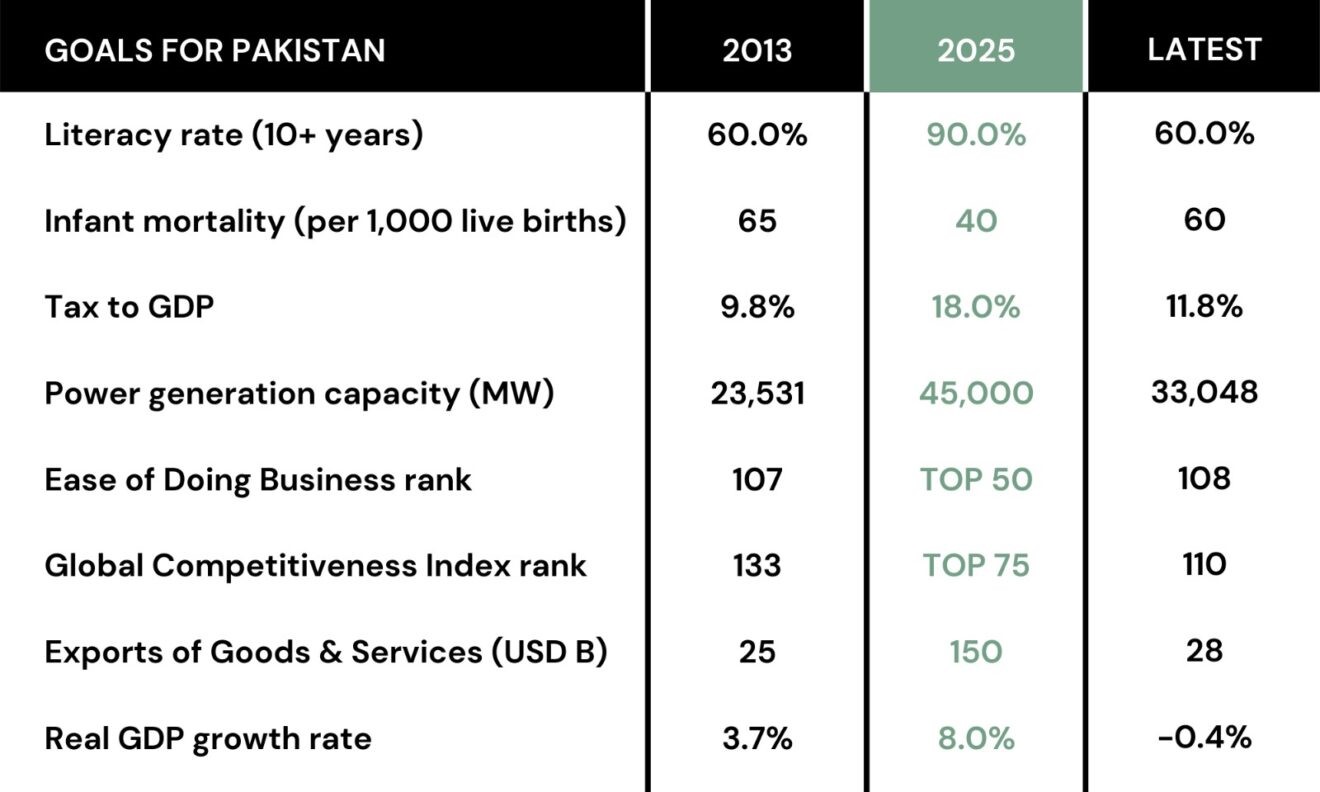
Source: Pakistan Vision 2025; PSLM surveys; Economic Survey of Pakistan 2019-20; EODB; WEF
The government in charge of creating Vision 2025 was PML-N but by the end of their 5-year term in 2018, they had not made any significant progress toward achieving set targets. Even after the arrival of the new PTI government, Pakistan continues to fall short of those hefty goals. Assuming linear progress, almost 60% of the goals should have been met by 2020, 7 years on from when the plan was envisioned. However, across most metrics, we have made only slight improvements or none at all. From the last article, you might recall that exports have been stagnant. They stood at USD 28 billion in 2020 compared to the level of almost USD 100 billion, they should have been at by now.
We like to take things slow
In order to achieve Vision 2025, real GDP growth of up to 8% was required. The plan was pretty simple and included all the features Macro Pakistani also believes to be critical for growth. Invest in human development, boost public revenues to invest in the domestic economy, empower businesses and improve competitiveness to achieve export-led growth.
export-led growth. However, failure to address structural issues has led the country to consistently fall short of growth targets.
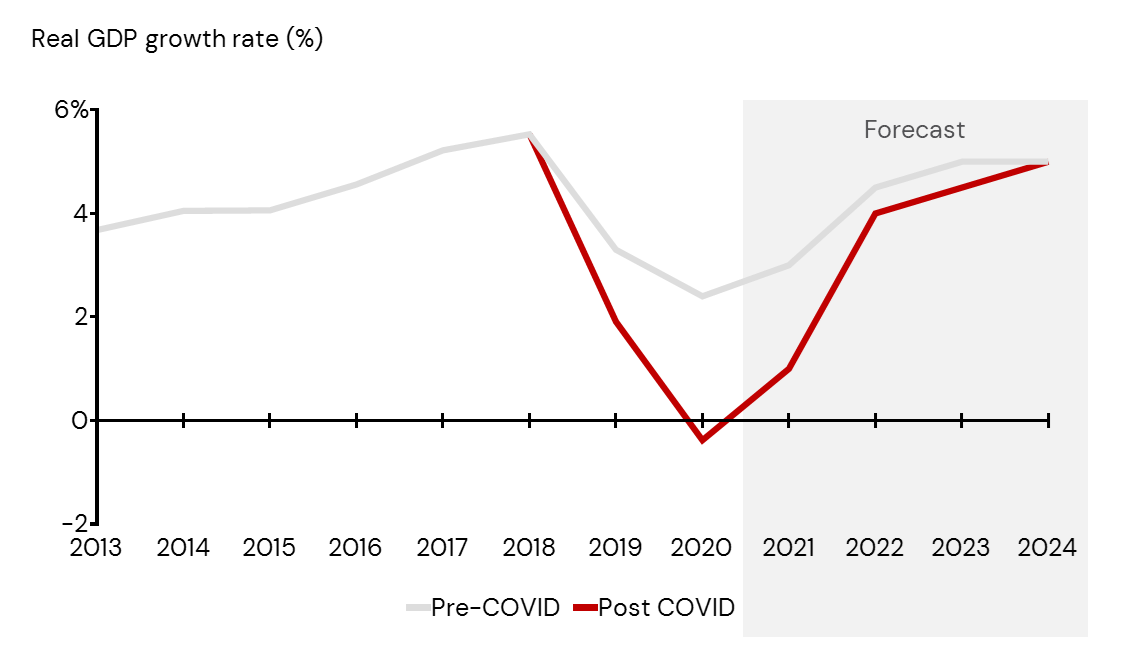
Source: Pakistan Bureau of Statistics; IMF (April 2020)
We love the IMF
Instead of achieving the envisioned export-led growth, fueled by enhanced investment in human development, domestic competitiveness and innovation, Pakistan continued to be a consumption driven economy. The current account deficit jumped to over 6% of GDP as consumption of imports increased rapidly and the country found itself in a balance of payments crisis. This was nothing new and this cycle has repeated itself several times in Pakistan’s history.
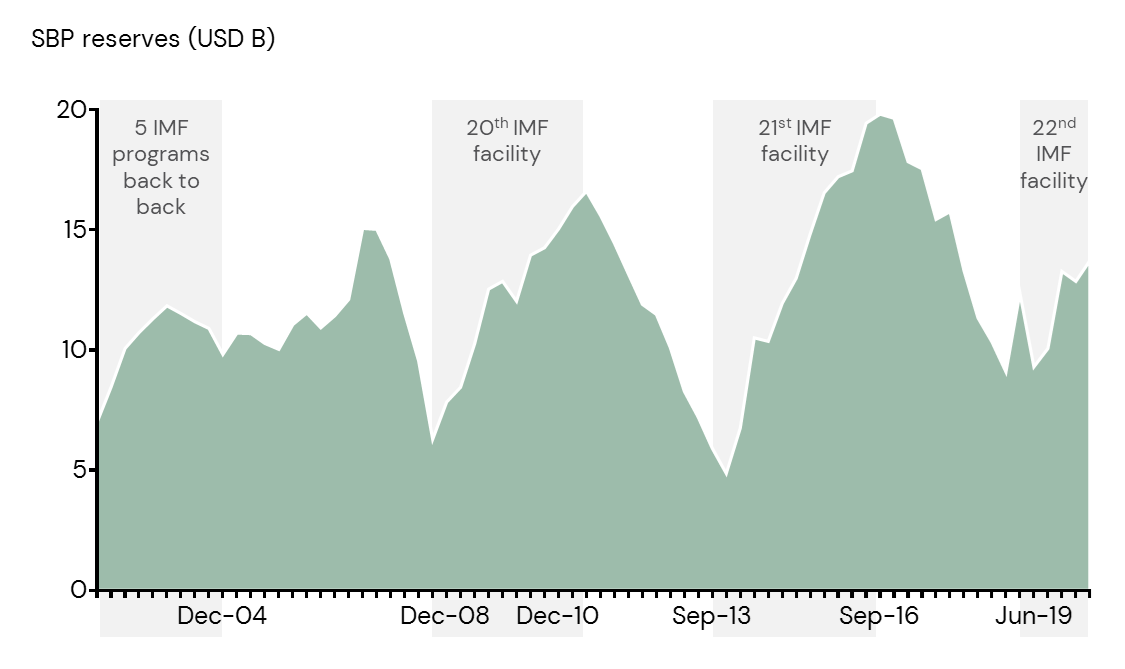
Source: State Bank of Pakistan; IMF
State Bank of Pakistan’s foreign exchange reserves are the best indicator of when Pakistan will go to the IMF. When reserves reach critically low levels, the IMF and Pakistan enter into agreements and hope things turn around. Without delving too much into the history of the relationship between the IMF and Pakistan, Macro Pakistani readers should understand that the International Monetary Fund regularly hands out rescue packages to Pakistan with strict austerity measures geared towards stabilization
Stabilization not growth
It is important to note that these agreements between the IMF and Pakistan are not meant for growth. They are programs aimed at macroeconomic stability and fixing external and internal imbalances within the country. The latest program as well, was expected to address the twin deficit issue of fiscal and current account deficits.
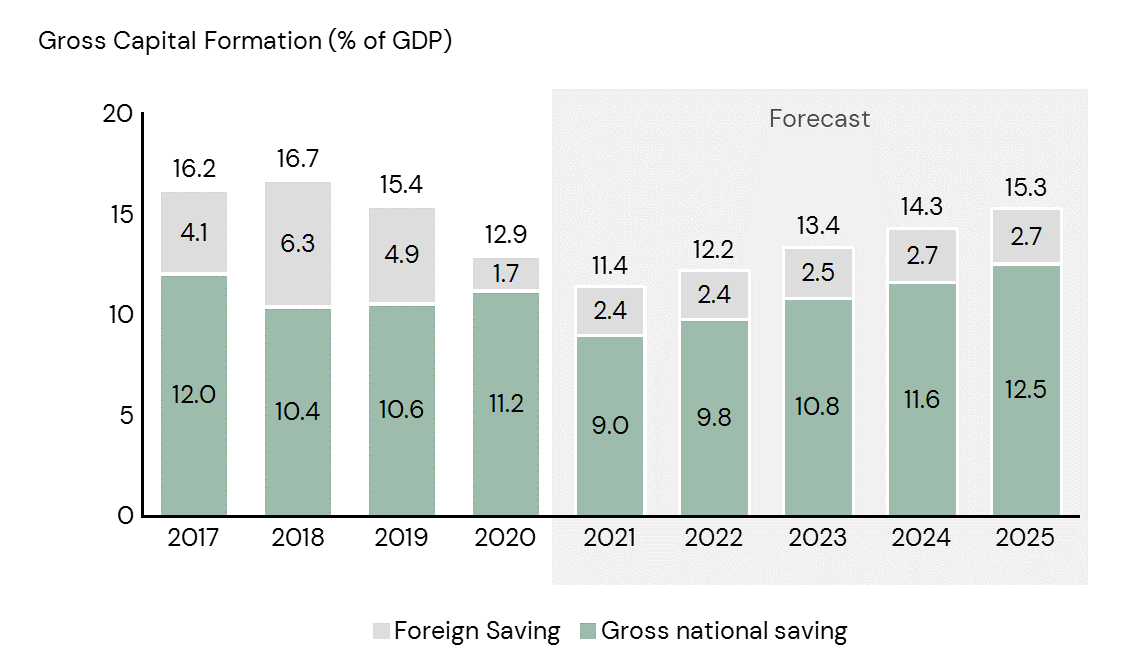
Source: IMF (April 2020)
Take for example the structural issue of investment in Pakistan that Macro Pakistani identified earlier. Historically, Pakistan has invested around 15% of its GDP compared to over 30% of GDP by countries like Bangladesh, India and Indonesia. Even with the IMF program, it is not the level of investment that is expected to rise. It is the make-up of that investment – a move away from reliance on foreign saving to focus on domestic national saving by both the private and public sectors. While in 2018, 6.3% of GDP or 38% of total was invested from foreign savings (essentially the current account deficit), only 2.7% of GDP or 18% of total is expected to be invested from the same sources.
More of the same
Targets were agreed between the IMF and Pakistan to bring the country in line with other emerging markets in terms of social spending pre-COVID-19. However, due to the Great Lockdown, the existing program was paused and a separate facility to assist with the pandemic worth USD 1.4 billion was disbursed. Nonetheless, even before the
pandemic, set targets were being revised downward as the IMF realized that the Pakistani authorities did not have the capacity required to make these expenditures.
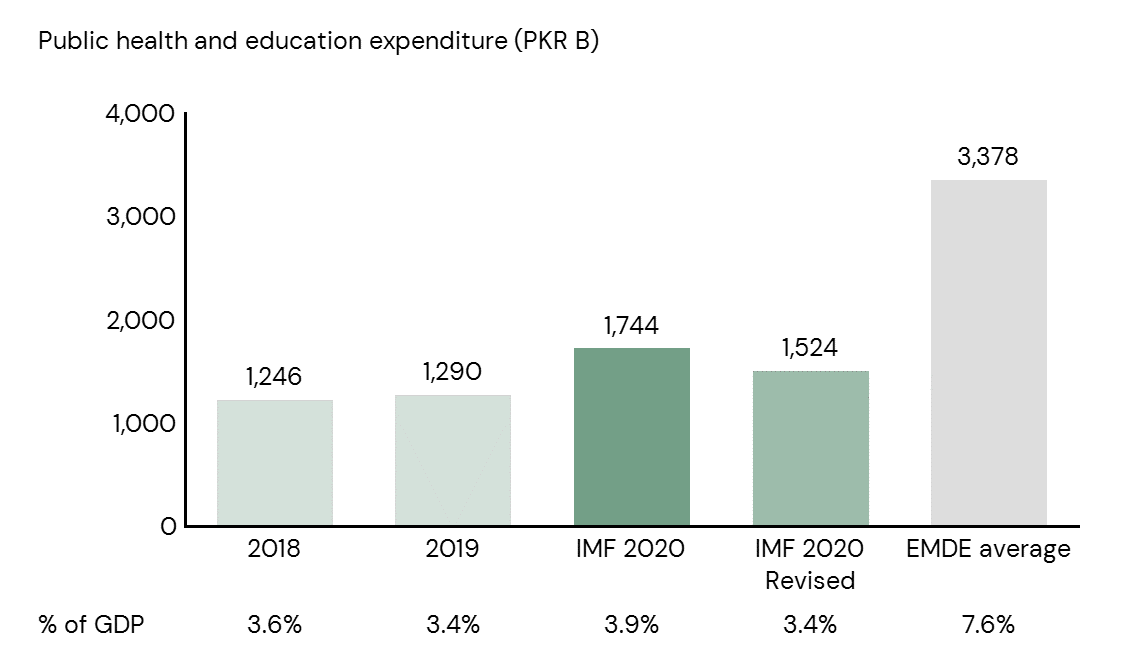
Source: IMF (Jul, Dec 2019)
Initially, the target for public health and education spend was set at PKR 1.7 trillion for 2020, a 35% increase from 2019. After just one quarter, when the authorities missed the quarterly target by 26%, the annual target was revised downward to PKR 1.5 trillion, more in line with historical spends of 3.4% of GDP. Pakistan also missed targets for cash transfers (BISP), FBR tax revenues, refund of tax arrears and circular debt elimination, but these were just Indicative Targets.
If you want to learn more about the kind of targets set by the IMF, read the full article below. If you have more time on your hands, read the full report published by the IMF post COVID-19 here. They tell you more about where the country is headed than annual reports and visions published by the government themselves. Next time we will discuss how the government responded in fiscal and monetary terms to address the impact of COVID-19 on Pakistan.
Read the full article in the link below
What is the relationship between the IMF and Pakistan?
Overview of the latest agreement between the IMF and Pakistan, keeping in mind historical context and the country’s own Vision 2025.
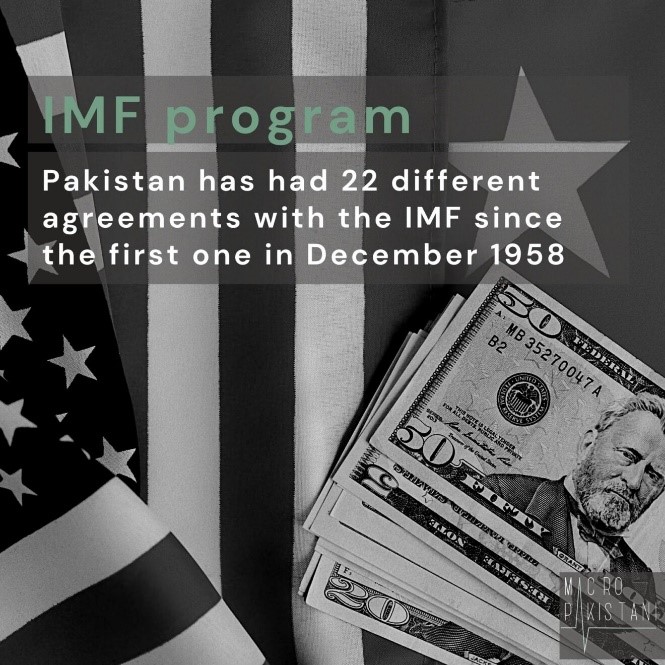
If you have any feedback on this newsletter or the website itself, feel free to reply to this email. You can also share the entire article and even selected excerpts by simply highlighting the text on your own profiles!





